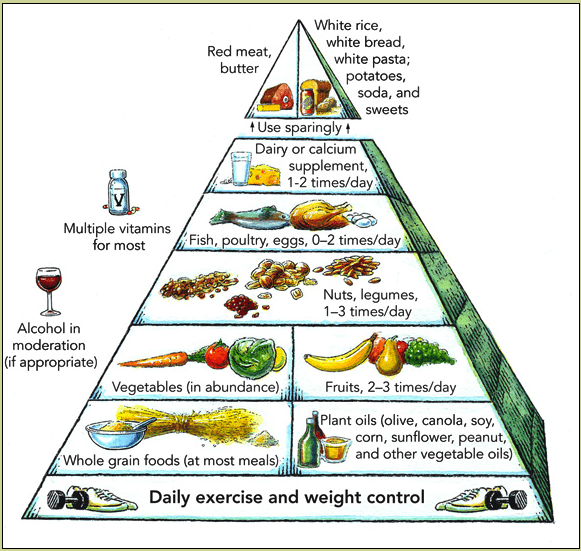
It’s only taken me nearly 60 years to finally commit to eating a healthier diet, one stocked with veggies, fruits, whole grains and a dramatic reduction in processed foods. Better late than never I guess.
What triggered me to reassess the way I eat was the realization that I am almost as old as my father was when he was diagnosed with Type II diabeties. He was warned numerous times to change his eating habits and increase his physical activities to help manage the progression of his disease. Sadly, he never did and he spent his last years suffering from diabetic neuropathy and the attendant loss of mobility.
I now recognize that I need to change the way I eat now, while I am still healthy, because if I don’t I will eventually have to make these changes in a few years when I too will be diagnosed with Type II diabetes. Today is as good a day as any to start on a new path.
After much pondering, I have decided to follow the Mediterranean diet. I’d considered living the Mediterranean diet before, but I got scared off by all the veggies and seafood that are part of the Mediterranean lifestyle. I can’t deny, I’m not much into either seafood or veggies. However, I have determined that the Mediterranean diet is one I can follow for the rest of my life. I’ve looked at the Keto and Paleo plans because of their weight loss potential, but these diets are so restrictive I’m not sure I can follow them long term.
What is the Mediterranean Diet?
So just what is the Mediterranean diet, and why is it the ranked number one diet according to US News? Let’s start with a short history lesson. In 1946 an American physiologist named Ancel Keys studied the eating habits of the denizens of Greece, Crete and southern Italy, and discovered that most of the worlds centenarians resided in this region. His hypothesis was that the non-saturated fats sound in olive oil and seafood, along with copious amounts of fruits and vegetables,consumed by Mediterranian dwellers kept their hearts much healthier than the typical western diet of meats and diary of the time(note: parts of Ancel Keys research have come under intense criticism because some of his methods and conclusions are now considered sloppy and incomplete. Even so, most health experts believe his theory of consuming fresh produce, whole grains and seafood is still the best way to go for healthy eating. I would also point out that Keys lived to 101).
The diet that the Greeks and southern Italians followed in 1946 was centered around vegetables, fruits and lentils. Lots and lots of vegetables. Additionally, they ate plenty of whole grains and healthy fats like olive oil. Their primary protein sources fish and poultry, which they ate a couple of times a week, and beans. Red meats and sweets were for special occasions and usually only consumed 2 or 3 times a month. Oh, and they drank red wine almost every day.
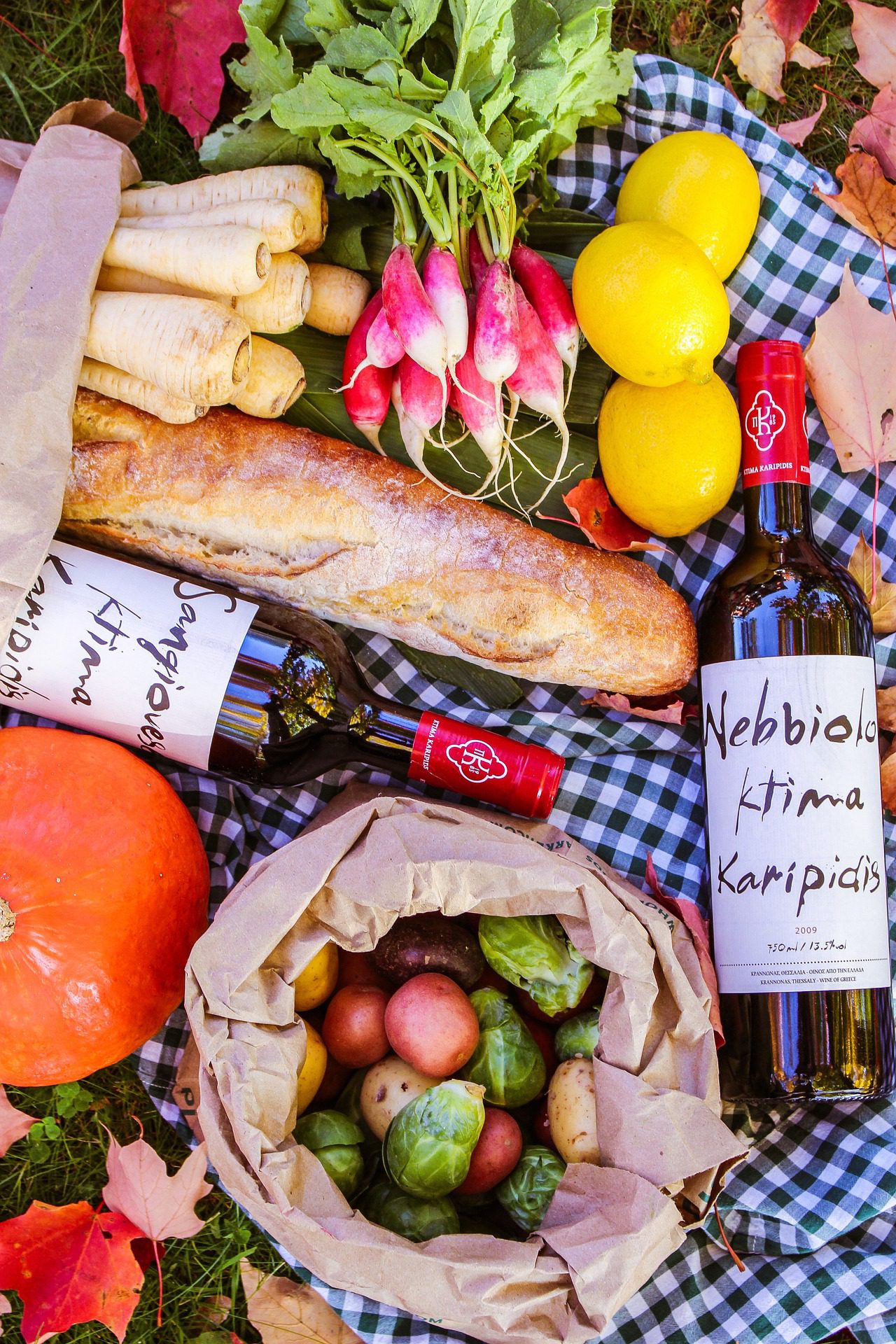 What’s the one thing you will notice about this way of eating? There are NO forbidden foods! Carbs are not taboo. Even sweets are allowed, if only in small amounts. As long as the breads and grains are whole grains and not refined, and by making sure not to go overboard in eating them, then these carbs are considered healthy. Because this diet is inclusive rather than restrictive, it much easier to adhere to long-term.
What’s the one thing you will notice about this way of eating? There are NO forbidden foods! Carbs are not taboo. Even sweets are allowed, if only in small amounts. As long as the breads and grains are whole grains and not refined, and by making sure not to go overboard in eating them, then these carbs are considered healthy. Because this diet is inclusive rather than restrictive, it much easier to adhere to long-term.
The Mediterranean diet also calls for daily physical activity. In the 1940s there were very few cars in Greece and southern Italy, so people walked or bicycled everywhere. To work, to the store, to school and so on. They also performed other physical demanding activities such as gardening and cooking.
Let’s see, bicycling, gardening and drinking wine. Replace the wine with beer and I’ve got this part covered!
One other important aspect of the Mediterranean diet is to make meals (lunch or dinner) a social occasion. Long lunches, sometimes for two or three hours, with family and friends are (or were) daily events in Greece and southern Italy. A lot different from our modern age, when we barely taste the food we shovel into our pie-holes because we are too busy looking at our smartphones and not at the people around us.
Deviating from the plan
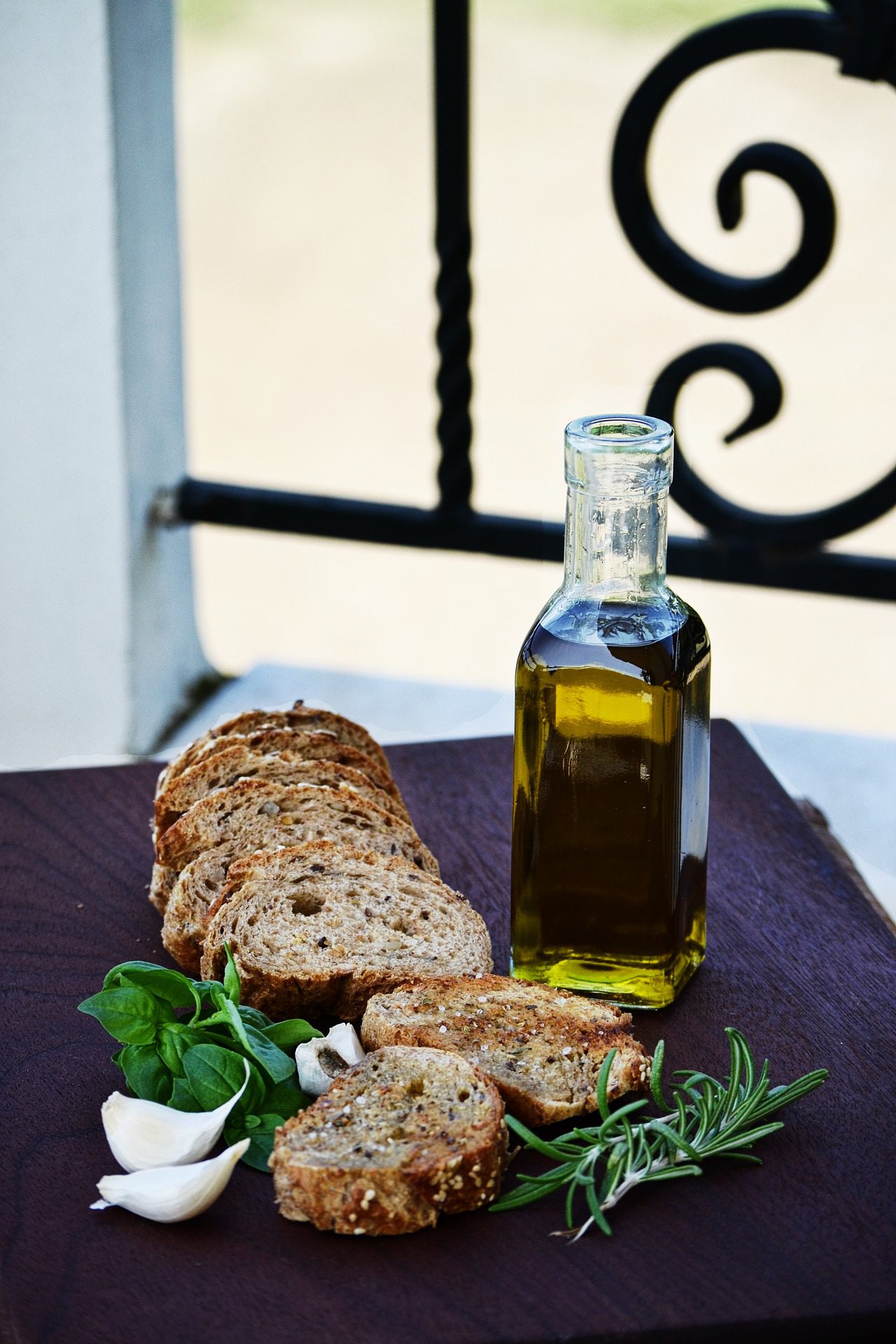 With all that being said, there are parts of the diet that I’m going to deviate from. I am a little concerned about the amount of protein that the diet provides. I am not sure it is enough for me. I strength train on a regular basis, and this requires more protein than the FDA standard recommendation. Also, recent studies indicate that we may need more protein as we get older (see here). The Mediterranean diet protein amounts, if followed correctly, comes to about 15-20% of daily calories. My aim is for 25-30% of my calorie intake to come from protein.
With all that being said, there are parts of the diet that I’m going to deviate from. I am a little concerned about the amount of protein that the diet provides. I am not sure it is enough for me. I strength train on a regular basis, and this requires more protein than the FDA standard recommendation. Also, recent studies indicate that we may need more protein as we get older (see here). The Mediterranean diet protein amounts, if followed correctly, comes to about 15-20% of daily calories. My aim is for 25-30% of my calorie intake to come from protein.
I’m also going to eat more red meat than the Mediterranean diet recommends. If you look at a Mediterranean diet pyramid, you will see that red meat is only supposed to be consumed once or twice a month. I am fully aware that the American Heart Association frowns upon red meat because of its saturated fats. But I like red meat and I’m going to continue to eat it. I will just eat a little less of it. Perhaps once or twice a week tops.
Besides, recent studies have shown that saturated fats aren’t necessarily “bad”, that in fact they are more of a neutral fat. While the American Heart Association downplays it, some studies show that we might actually need some saturated fat (see here).
The other major change I’ll be making to my version of the Mediterranean diet is the type of alcohol I’ll consume. Red wine is a big part of the Mediterranean diet and a glass or two each day is actually recommended. But since I’m not a big fan of wine, I’ll be sticking with my beer.
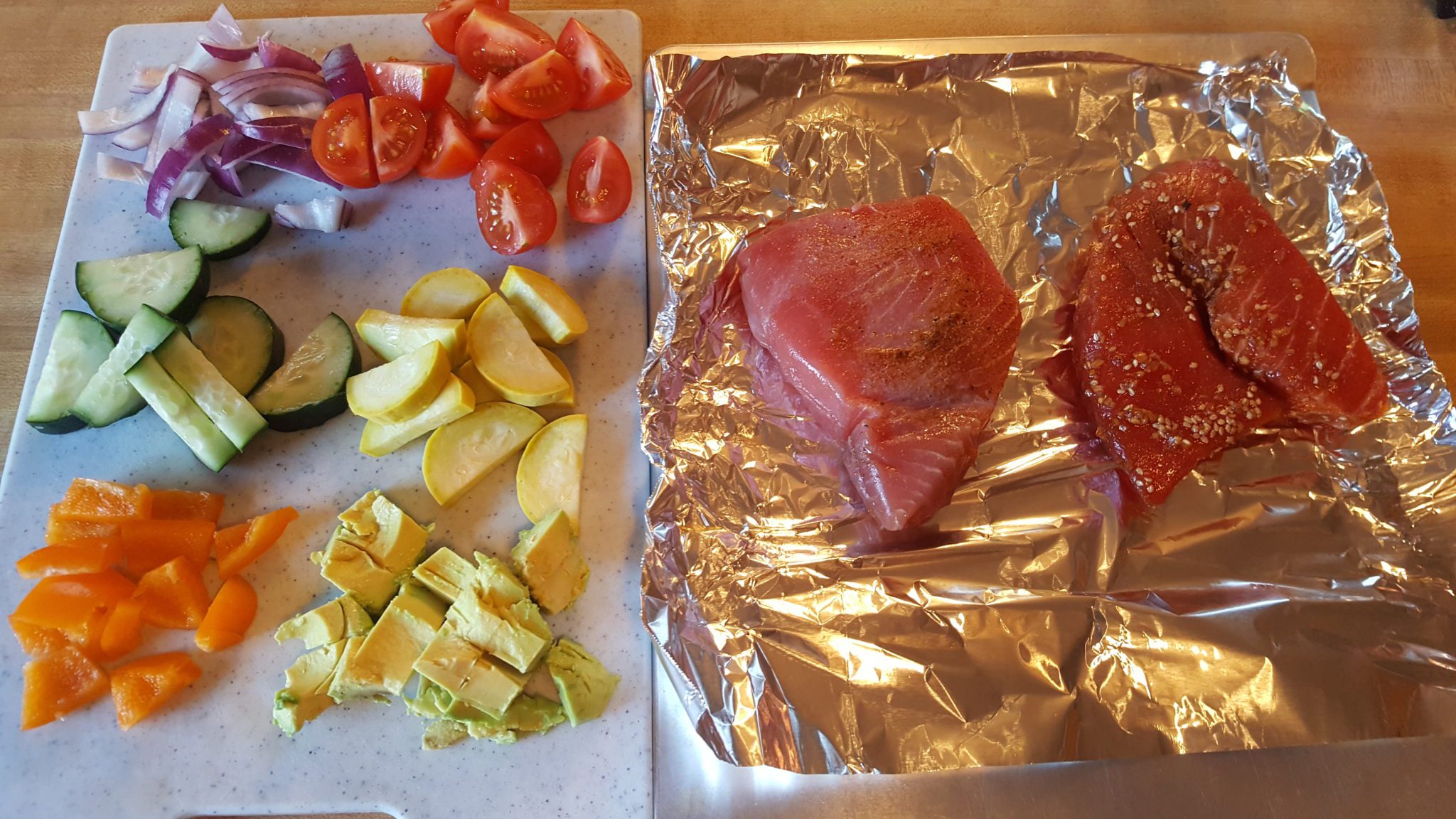
Preparing tuna steaks and a Greek salad.
What’s has worked so far:
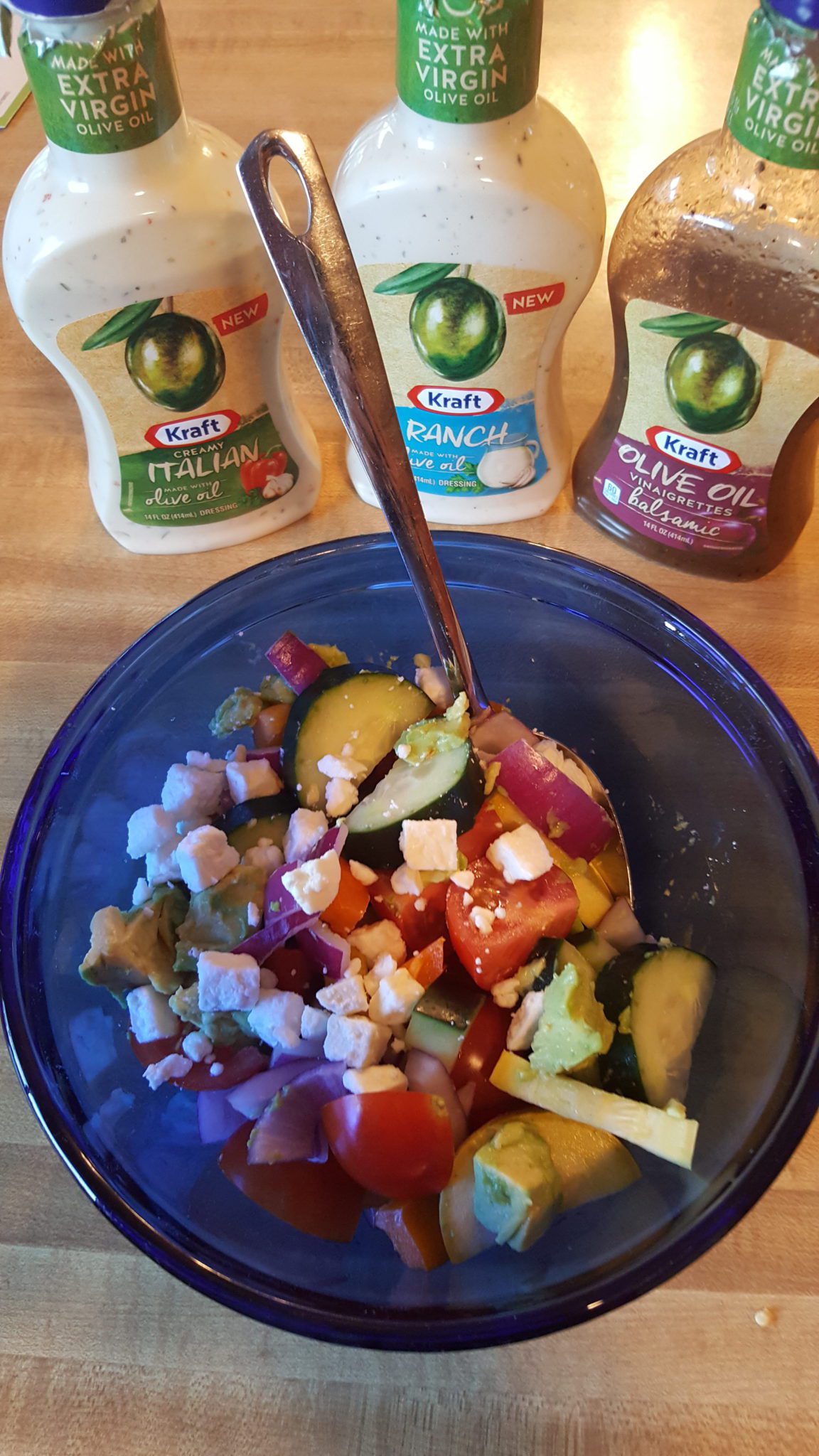
Greek salad: tomatoes, zucchini, avocado, cucumber, orange pepper and red onion; topped with crumbled Feta cheese and an olive oil based dressing.
Surprisingly, eating more vegetables and fruit has not been too difficult a transition. I make sure I have a wide variety to choose from, and some olive oil base dressing for the veggies. Purchasing a rotisserie chicken from deli department makes for easy cooking, and is tasty (for chicken) as well. My grocer has pre-made green leaf mixes that help reduce prep time and makes for easy and delicious salads.
With all the fruits, veggies and beans I’m consuming, I find I feel much more sated throughout the day. I now eat a piece of fruit most evenings as dessert. However, what I especially like about the Mediterranean diet is that there are no “forbidden” foods. Even sweets are allowed (in very small portions) and so Mrs. Vintage and I have some ice cream or a donut after dinner on the weekends.
Because there are so many new foods available to me and so many ways to prepare them, I have been able to drastically cut back on fast food and processed foods.
What has been a struggle:
As I mentioned above, I really like my red meat and I am not a big fan of seafood. Reducing my red meat intake to just once a week and increasing seafood consumption to twice a week has been a bit of a struggle. I’ve found quite a variety of seafood recipes. Hopefully I can find a few that I like.
Finding breads actually made of whole wheat instead of enriched flour is proving to be harder than it should be.
Reducing sweets so far has been a bitch. I’m still craving sweets after dinner during the week. I’ve been replacing them with fruit, but every 2 or 3 days I start to get withdrawals and then I backslide a bit.
I’ve also come to realize just how much I like dairy products. The average American tends to consume 3-5 servings of dairy and cheese a day, where on the Mediterranean diet you’re supposed to keep dairy to no more than 2 servings a day. I’m compromising and aiming for 3 servings a day. This adjustment may take a little bit of time.
Change can be hard:
As I take up this new way of eating I constantly remind myself that perfection is the enemy of the good. This helps to remind me that a major change like this takes time, and that trying to be perfect is self-defeating. If I am able to follow this plan by 80-90%, I have made huge strides in achieving a healthier lifestyle. It’s okay to be imperfect.

